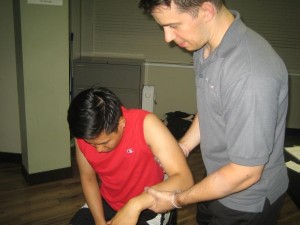Campylobacter infection is commonly caused by ingesting food or drinking water contaminated with the aforementioned bacteria. It is frequently caused by the bacterium Campylobacter jejuni but it can also be caused by other species in the same genus. It is an illness of the gastrointestinal tract, thus most of its signs and symptoms, which will be discussed later in the article, affect the digestive system. Majority of the cases
are isolated cases rather than outbreaks. It is one of the most common causes of food poisoning or traveler’s diarrhoea.
Causes of Campylobacter Infection
The following are the reported causes of a Campylobacter infection:
- Eating contaminated foods
- Drinking infected water
- Close contact with infected people or animals*
*Vomit and feces may contain traces of the Campylobacter bacteria
Common Food Sources of CampylobacterInfection
Campylobacter does not commonly grow on food, however it does easily
spread, thus even very few bacteria in food can already cause illness. The following are common food sources for a Campylobacter infection:
- Red meat
- Raw and undercooked poultry
- Fresh poultry
- Unpasteurized milk
- Untreated water
Symptoms of Campylobacter Infection

The incubation period of the Campylobacterbacterium ranges from two to five days. The illness may last from two to days, depending on the severity of the illness. In some cases, complications such as dehydration can occur from excessive loss of fluids that can prolong the duration of the illness. The following are the common signs and symptoms of a Campylobacter infection:
- Diarrhoea, usually watery, slimy and dark in colour; may be bloody
- Nausea and vomiting
- Intense abdominal cramps
- Fever
First Aid Management forCampylobacter Infection
Mild cases of Campylobacter infection do not usually require treatment or hospitalization. It is rarely life threatening. Most serious cases occur with very young children and the elderly. The main foal of first aid management for Campylobacterinfection is to manage the symptoms and avoid dehydration. The following is usually done in cases of Campylobacter infection:
- Take plenty of rest.
- Drink eight to ten glasses of clear fluids, preferably water and dilute rehydration solution. Every time there is a loose bowel movement, drink at least one cup of liquid.
- Instead of eating three big meals, eat small meals instead.
- Start by eating bland diet such as bread, toast, rice and fruit.
- It is not ideal to take anti-diarrheal or antibacterial medications as it may cause the infection to last longer unless it is recommended by a doctor.These are usually advised in serious cases of infections.
Disclaimer: This article does not provide medical advice and should not be substituted for formal training. The information given should not be used for self-diagnosis. Seek medical attention when necessary. It is important to recognise potential medical emergencies at all times to avoid complications from developing. To learn more about how to manage Campylobacter food poisoning, enrol in First Aid Courses and CPR Courses with Red Cross Training.
Online Sources:
http://www.foodsafety.gov/poisoning/causes/bacteriaviruses/campylobacter/
